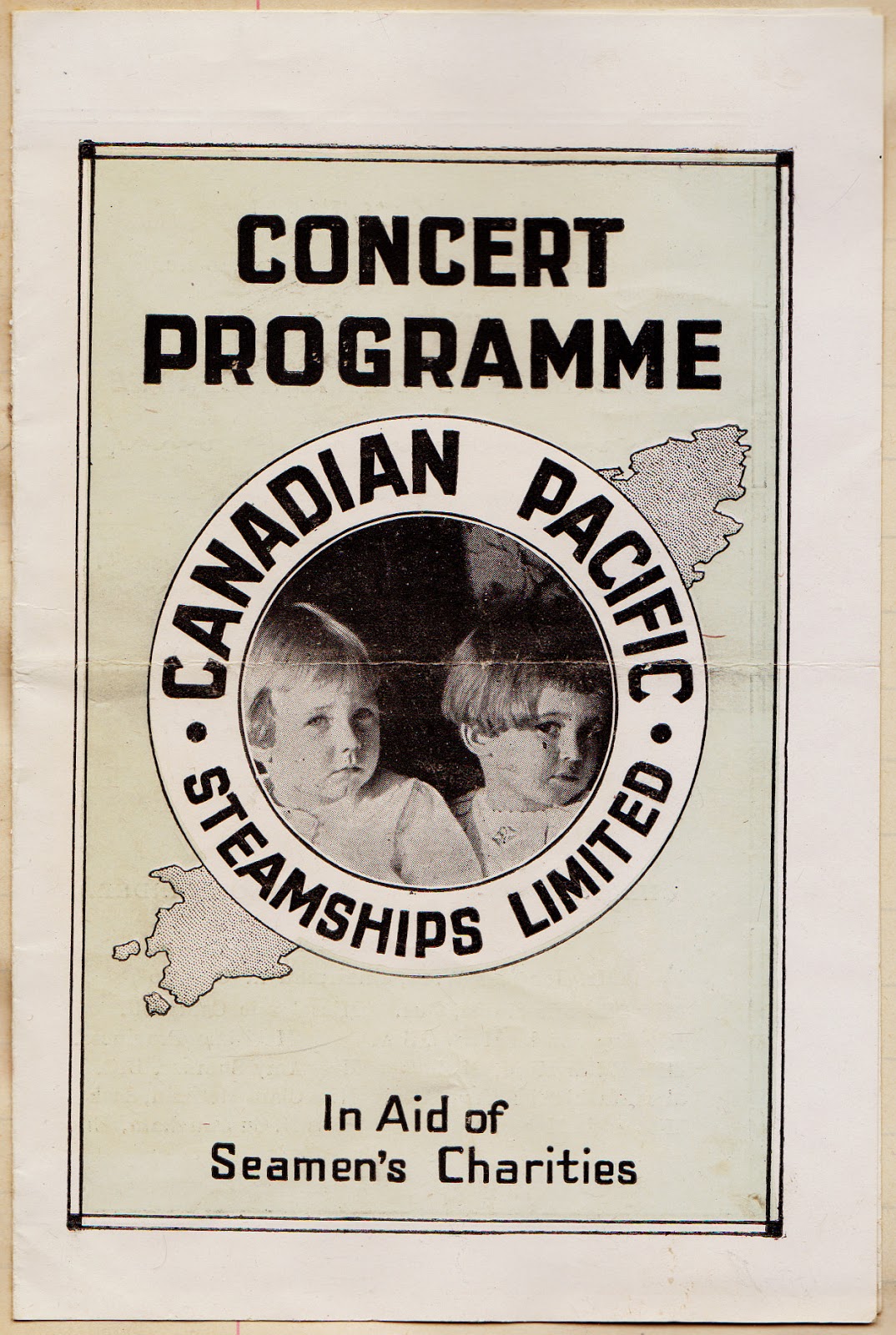In the previous instalment of Mabel Rodger's saga, she had graduated from Macdonald College, was working as a teacher and was about to depart on a summer trip to Europe with the Overseas Education League.
The previous post presented the instructions and hints for the trip and some background on the OEL and its stated mission
Here is my grandmother's account of her trip across the Atlantic, along with artifacts related to that event.
This uncaptioned photo appears in the previous post and is the only image of the trip which I have found. Although Mabel is holding a box camera (extreme right), no photos from the trip have yet surfaced.
The 'paquebot' cancellation was familiar to me in the sense that the term is still used on television in Quebec to refer to an ocean-going ship. Paquebot - a corruption of the English for 'packet boat' - was a special cancellation used by international agreement. For a while, French was the international 'diplomatic language' of Europe and this may explain the choice of this particular term.
Consider that mail might be created and 'posted' on a ship of a particular flag. On reaching the next port, the mail would handed off to the national mail system of that port (often in another country) and cancelled. The 'paquebot cancellation' respected the national postage of the ship's flag (i.e. foreign) and then the mail was forwarded in the normal manner.
The fact that the envelope is stamped with a 'three halfpence' stamp on dry land at Southampton kind of torpedoes the 'mail at sea' reason for using the cancellation. And I just realized that I could be off searching for photos from the trip if I weren't trying to understand the work of an English mail clerk a century ago. (Update, Feb 18: Surprised! - I actually find some photos.)
At any rate, we are able to read my grandmother's account of this trip because her letters were preserved and returned by the woman in the photo below.
The fact that the envelope is stamped with a 'three halfpence' stamp on dry land at Southampton kind of torpedoes the 'mail at sea' reason for using the cancellation. And I just realized that I could be off searching for photos from the trip if I weren't trying to understand the work of an English mail clerk a century ago. (Update, Feb 18: Surprised! - I actually find some photos.)
At any rate, we are able to read my grandmother's account of this trip because her letters were preserved and returned by the woman in the photo below.
Here is a photo of Alice Gall, my grandmother's maternal aunt. Below are 'Aunt Alice's' siblings as noted by my father on the back of the photo.
My grandmother's letter follows.
Firmly glued into my grandmother's Macdonald College yearbook/scrapbook are the following artifacts.
from the previous post:
The Canadian Pacific Steamship Scotian was a single-stacked passenger liner in use between 1898 (built in Belfast by Harland and Wolff) and 1927 (scrapped). In terms of size: it was about half the length and beam of the Queen Mary with about 15% of its 'tonnage'. It had a top speed of about 15 knots. In the Great War, it was first a troopship, then a prison ship for German POWs until being taken over by the CPR in 1917. The touring party returned to Canada on another ship.
In another Canadian Pacific Steamships envelope is preserved this 'group identification' marker for the tour. This simple item was attached to the group member's clothing using a safety pin.
 |
| from: The Citizen's Atlas of the World; John Bartholomew & Son, Edinburgh; 1924. |
Here is how the North Atlantic was represented in an atlas of the same decade.
 |
| Concert Program Cover |
.. Passing the hat among women teachers to benefit the widows, orphans and dependents of former employees of a large, profitable corporation which had been paid to work in the service of the Empire during the Great War ... would not be questioned after all the other great sacrifices of the war. The Empire was sustained through duty and sacrifice.
During this period, long before photocopiers, passenger ships usually had their own printshops. They printed menus and other documents used while at sea. Large ships often produced and supplied upper class passenger manifests - so people could have a souvenir of their trip in 'Second Class' or become aware of acquaintances or celebrities sailing with them during the multi-day voyage.
In this case, the OEL touring party had the entire ship booked for their tour group. So this was a 'concert' they put on for themselves.
Preparing to stage this event could have served several purposes:
- To pass the time while travelling about 3050 nautical miles at a maximum speed of 15 knots.
- To reduce homesickness.
- To distract group members from any anxiety about the danger of an ocean voyage (this was 10 years after the Titanic sinking - 1500 lives lost; 8 years after the Empress of Ireland sinking - 1012 lives lost; and 4 years after the Great War).
- To encourage socializing and familiarity with other members of the group - especially those from distant Dominions and Colonies of the Empire.
- To help focus group members on their future 'mission' of understanding and promoting the British Empire to their school students.
- To enable tour officials to assess the talents and abilities of potential leaders within the tour group.
In general, the tour leaders used the isolation of the voyage to inculcate the ethics of the Overseas Education League and its mission - a combination of 'fun boot camp' and mild brainwashing in the service of the Empire. This would help prepare the teachers from the Dominions to appropriately appreciate all the grandeur of Britain they were to see during the two months of their experience.
 |
| Concert Program Interior |








